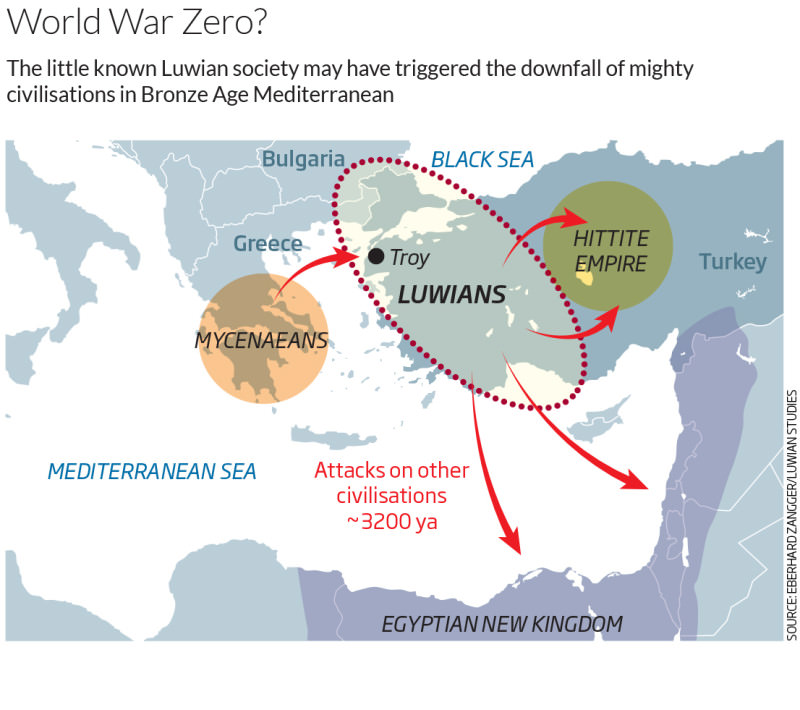nivek
As Above So Below
Deciphered Ancient Tablet Sheds Light on Mysterious ‘Sea People’


One of the enduring mysteries of Egyptian history is the identity of the “Sea People,” an unknown civilization (or perhaps multiple civilizations) which is believed to have sailed throughout the Mediterranean during the Bronze Age, wreaking havoc on ancient Egypt, Anatolia, Syria, Canaan, Phoenicia, and other territories.
Inscriptions and carvings depicting these mysterious invaders were first found in Egyptian tombs around Luxor in 1855, but Egyptologists and historians still aren’t sure who these people might have been or if they even existed at all. Still, numerous archaeological artifacts have been found depicting a mysterious civilization invading from the sea.

Thanks to the help of a few intrepid historians, researchers might be a little closer to answering those questions. Fred Woudhuizen and Eberhard Zangger have spent years studying the ancient inscription which is written in Luwian, a dead Indo-European language which only a few dozen scholars can read.
According to Woudhuizen and Zangger, the inscription describes a kingdom called Mira located in what is now western Turkey which ruled the legendary city of Troy. The inscription reportedly details how Mira’s leader King Kupantakuruntas sent the Trojan prince Muksus to conquer native lands. Could this shed light on the “Sea People” mystery?

While finding clues of an ancient seafaring race is fascinating, the story of the inscription itself is much more tantalizing. The inscription was reportedly found in the estate of James Mellaart, an accomplished Egyptologist and archaeologist who died in 2012. The original tablet on which the inscription was found has been lost to history, but Mellaart owned a rubbing and a replica of it.
After Mellaart died, colleagues found instructions among his estate that said the tablet should be deciphered as soon as possible after his death. Mellaart wrote that the copy of the inscription was made in 1878 in a remote village in Turkey shortly before villagers destroyed the original stone slab to use as building materials for a mosque. Mellaart published a few articles and book chapters on the inscription, but was unable to fully decipher it before his death. Some scholars even question its legitimacy altogether due to the fact that there is no concrete evidence other than this rubbing. Could this be a long-lost ancient treasure shedding light a forgotten corner of history?



